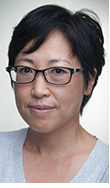Essay spotlights social activism in professor emeritus Fisk's career

Sarah Deyong
As a leader of numerous projects undertaken amid politically charged situations during his career, Pliny Fisk, Texas A&M professor emeritus of architecture, is continuing the legacy of 1960s progressive idealism, argues Sarah Deyong, associate professor of architecture at Texas A&M, in an [essay] (http://www.tandfonline.com.lib-ezproxy.tamu.edu:2048/doi/full/10.1080/10464883.2014.864898#.UzDyP61dWCY) published last Spring in the Journal of Architectural Education.
"He is an extraordinary thinker with an impressive track record in the real world; he puts theory into practice in ways that are both radical and productive," said Deyong.
During his years as an associate professor at Texas A&M’s College of Architecture, Fisk headed development of the [groHome] (http://archcomm.arch.tamu.edu/archive/news/summer2007/solarDecathlon.html) , Texas A&M’s award-wining entry in the U.S. Department of Energy’s [2007 Solar Decathlon] (http://www.solardecathlon.gov/past/2007/) . He is the co-directing co-founder of the [Center for Maximum Potential Building Systems] (http://www.cmpbs.org) , an independent, nonprofit research and educational organization that designs and tests programs integrating air, water, food, energy and material systems to build healthy and sustainable communities.
In Deyong’s essay, “Rethinking the Legacy of the Sixties: Pliny Fisk's Political Ecology,” she notes that the tumultuous decade divided architectural educators into two factions, one focusing on the primacy of theory, and the other, which saw the architect as a community-engaging agent for social change; Fisk experienced the latter approach as a student in the Graduate School of Fine Arts at the University of Pennsylvania.
He earned a dual masters’ degree in architecture and landscape architecture under the tutelage of professors from an array of disciplines, including architects, engineers, ecologists and planners.
After graduating, said Deyong, Fisk’s projects combined technology, systems thinking and advocacy planning — the attempt to democratize urban planning and policy through public participation — with a clear agenda for social justice.
“Unlike the imaginary utopias of the 1960s,” said Deyong, “this work took shape in the milieu of revolutionary activities fomented in rural Texas and Central America.”
After joining the University of Texas faculty in 1971 and co-founding the Center for Maximum Potential building Systems, Fisk forayed into social activism in 1977 in Crystal City, Texas, where the town’s gas supply was [shut off] (http://www.txses.org/solar/content/crystal-city-gas-cut-0ff) when residents refused to pay an increase that was triple the usual rate.
Fisk, said Deyong, saw the crisis as an opportunity to nudge the city toward economic autonomy. He developed solar hot water heaters made from recycled materials and helped the town’s residents set up a cooperatively owned factory to make them.
“The solar water heater factory,” he said, was “designed so that it could be managed by local people and was organized so that skills and jobs could be rotated. That way, more and more people could learn how the solar collector worked and how to construct and install one.”
She said he regarded the factory’s creation, which established a grassroots economic system fueled by production, use, maintenance, and consumption, as the ultimate success of the project, not the development of the water heater.
Fisk also responded to the gas cutoff by coordinating the installation of 800 wood-burning stoves in Crystal City, fueled with mesquite wood, an “abundant natural resource that grows like a weed and burns at very high temperatures.”
Fisk’s other projects included his creation of a plan to use and produce wind power in the Caribbean island nation of Grenada in the early 1980s, the development of a housing prototype for an impoverished community in civil war-wracked Nicaragua in the mid-1980s and an effort to resuscitate the independent family farm in south Texas in the late 1980s.
His work, she said, “defined a new kind of alternative practice at the juncture of architecture, urban planning, radical politics, and ecology.”
Deyong’s essay, addressing the journal’s design activism theme, was competitively selected for publication through a peer-review process. The journal, the flagship publication of the [Association of Collegiate Schools of Architecture] (http://www.acsa-arch.org) , has a membership of 250 schools representing 5,000 faculty members, all accredited architecture programs in North America and a supporting membership of over 500 architecture firms, product associations and individuals.
Research for the essay was supported by a grant from the [Graham Foundation of Advanced Studies in the Fine Arts] (http://www.grahamfoundation.org) .
Deyong, recently promoted to associate professor of architecture, specializes in the history and theory of modern and contemporary architecture.
Tags
- arch gallery
- architecture
- archone gallery
- building a better texas
- coa gallery
- competitions
- energy
- entrepreneurship
- feature
- honors
- interdisciplinary
- planning
- research
- research gallery
- rss
- sustainability
- technology
- theory-philosophy
Related Posts

Summit explored education advances with ‘smart’ cities
Students' solar-powered umbrella wins 3rd in contest

Texas A&M researchers enabling buildings to ‘breathe’

Light pipe tests under way at daylighting lab

Micro-manufacturing initiative earns NSF Convergence Award
Follow Us
Facebook Twitter Vimeo Youtube Flickr RSS
Recent Posts

Planning prof heads study of disaster housing aid

A message from the dean

Former student remembered as expert planner

Leading educator named new head of Architecture Dept.







_thumbnail_small.png)
